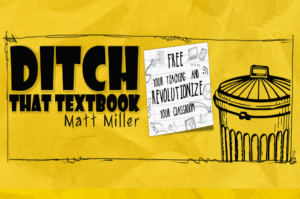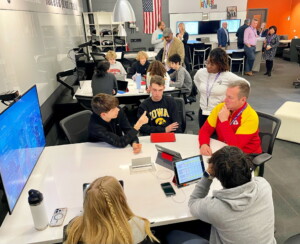5 things you’ll see more of in 2012
 The year coming to a close was difficult for many educators given a second year of budget cutting but it was an inflection point in the shift to personal digital learning. As we turn the corner from the old batch-print system you will see more of these 5 things in 2012.
The year coming to a close was difficult for many educators given a second year of budget cutting but it was an inflection point in the shift to personal digital learning. As we turn the corner from the old batch-print system you will see more of these 5 things in 2012.
Android tablets. Like ZDNet’s Dawson, I thought 2011 would be a big year for Android tabs but iPad is clearly dominant in education. Google apps for education exploded but not many were running on cheap Android tabs. I also thought we’d see more chromebook schools. Google chairman Eric Schmidt recently promised “a high quality tablet” but (unlike phone sales) they won’t catch iPad in 2012.
Playlists. Mobile app stores exploded this year, both Android, and Apple, but they are pretty hard to navigate. It’s much easier to build a music playlist than a math playlist. A coherent student experience is not just a UX problem—it’s an ecosystem problem. We’re still two years away from big adaptive libraries, smart recommendation engines, social tools, and aligned services, but look for promising signs from a couple platforms for fall 2012. (See the 10 elements of learning platform ecosystems to come.)
Heading in the right direction, we’ll also see the advent of web apps that run on multiple platforms, for example, a project-based learning tool that runs on Edmodo, Blackboard, and Moodle. (See Dr. Chuck’s blog for more.)
BYOD. It’s a bit complicated politically as well as technically, but we’ll see more districts adopt bring-your-own-device policies. Here’s 6 reasons schools should let kids bring their own devices to school and links to sample policies.
2 Million Minds. Another 2 million U.S. kids will be introduced to digital learning, most in schools that blend online with onsite experiences. A few hundred thousand will have the benefit of a custom blends. Another million will take online courses where their state and district allow it. Others will use adaptive software in tutoring sessions. Here are 10 reasons the shift to digital learning will happen faster than you think.
More investment. Piling on to the most recent Times hit piece, EdWeek blogger Walt Gardner added a ridiculous comment, “It will become clear that it’s impossible to provide a quality education and show a profit at the same time.” Perhaps Walt missed the doubling of venture and M&A activity over the last 24 months. There are hundreds of companies producing great products and profits while supporting higher levels of student achievement. Investment in edtech will probably double again in 2012 driven by global demand for education, cheap tabs, productive apps, and new learning models. In fact, it will soon be evident that it is virtually impossible to achieve quality at scale without productive contributions from the private sector. (See Private Capital in Public Education for more. Peter Meyer, Fordham, also found Gardner’s comments misguided.)






0 Comments
Leave a Comment
Your email address will not be published. All fields are required.